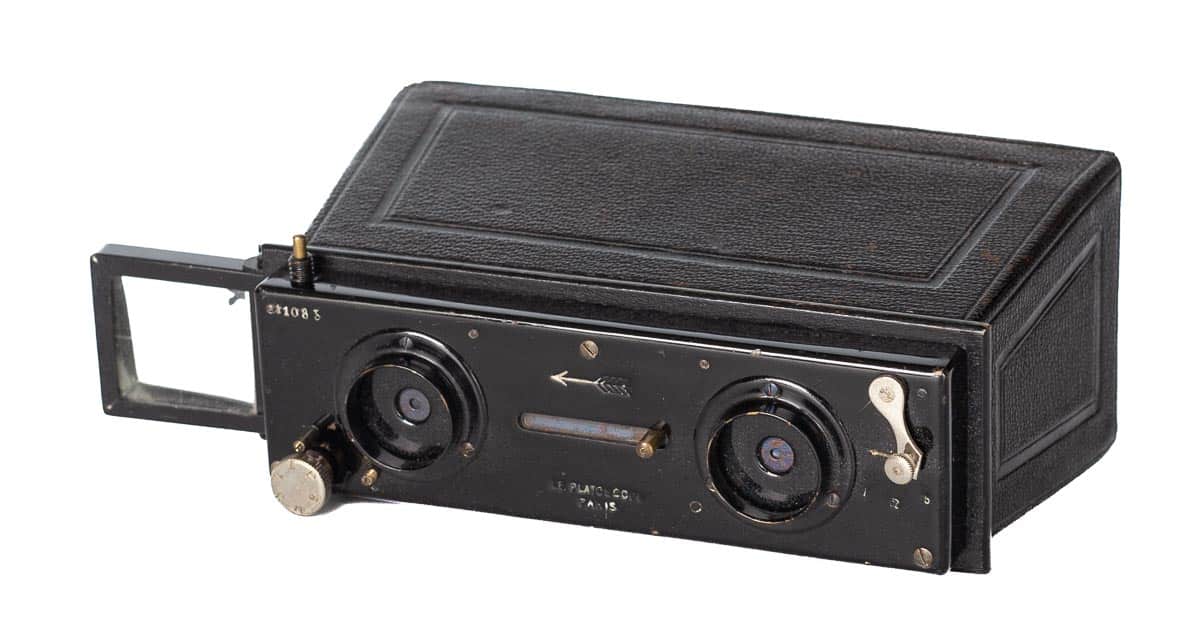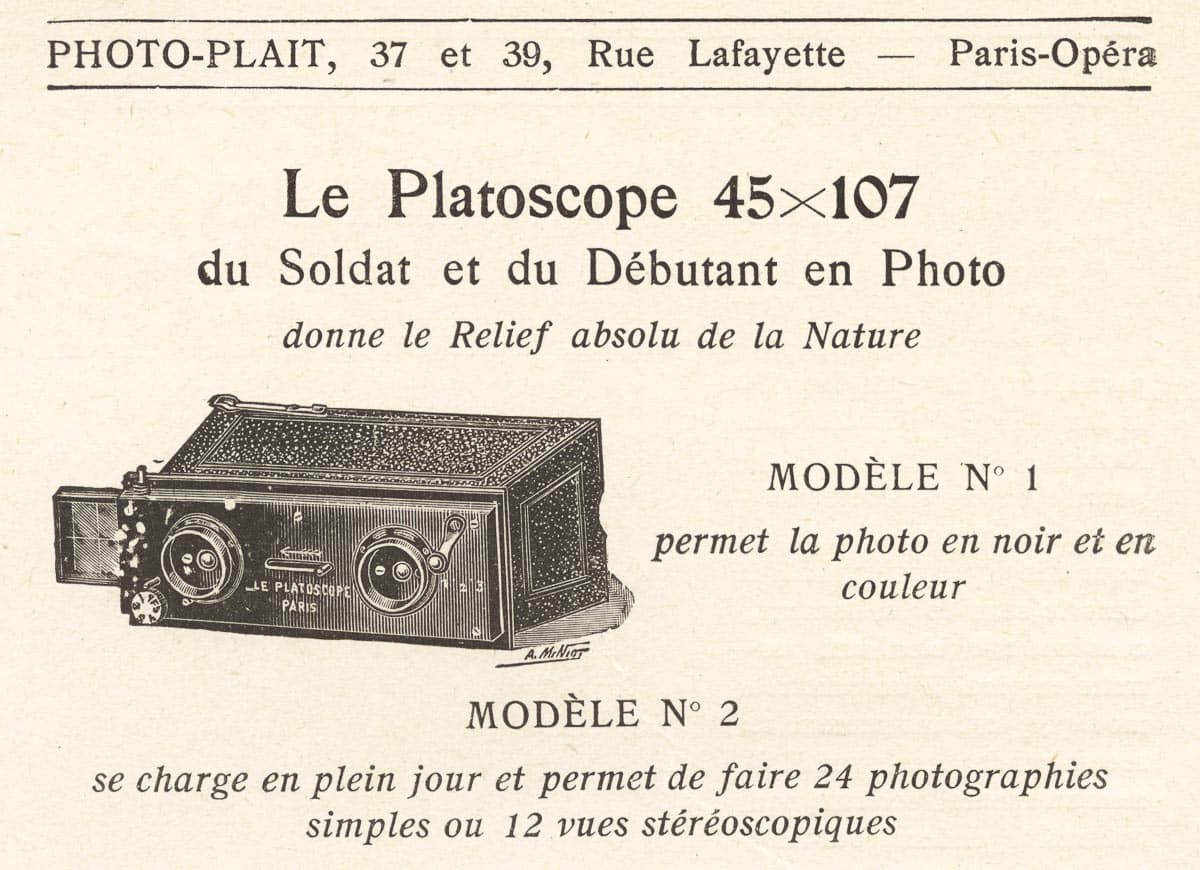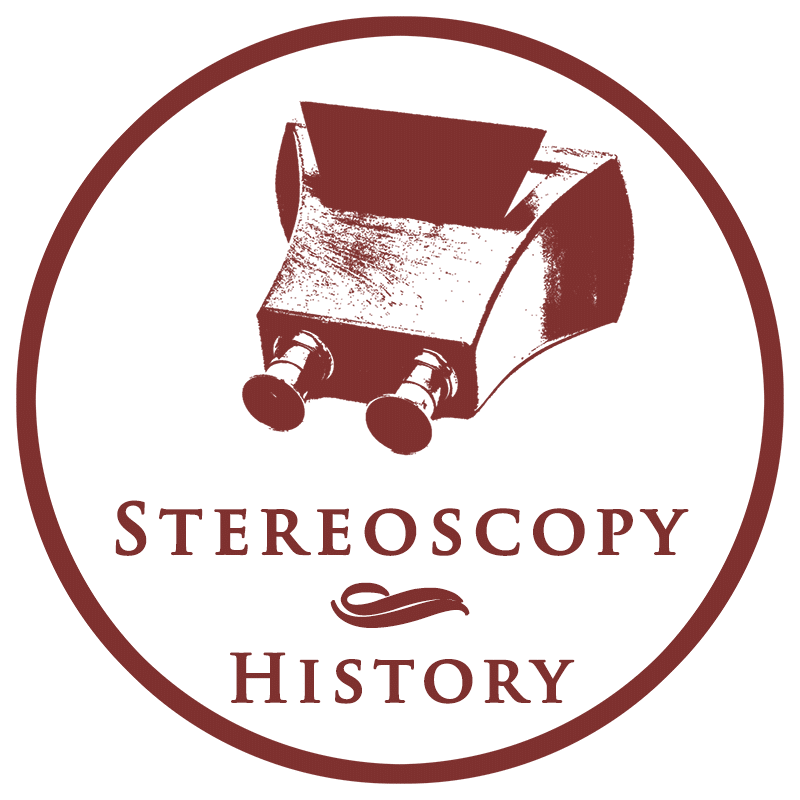
Le Platoscope is a basic stereo camera that was made by an unknown manufacturer and sold by Photo-Plait and other retailers. The camera was introduced during the First World War as a “sensational novelty”. Le Platoscope was promoted by Photo-Plait with the slogan “for the soldier and the beginner in photography”1. The camera shares similarities with Jules Richard’s Glyphoscope but misses the features needed to be used as a stereoscope. Le Platoscope was purchased with six plate holders and weighed 275 grammes, much less than the weight of the Glyphoscope Model 1 (430 grammes). It is unknown how popular this camera was among soldiers, but its compact shape and weight made it very easy to fit in a soldier’s backpack.

Specifications
| Manufacturer: | Unknown |
| Year of introduction: | 1917 |
| Year of manufacture: | c. 1925 |
| Type: | Stereo camera |
| Serial number: | 11083 |
| Negative type: | Glass |
| Negative format: | 45 x 107 mm |
| Lens: | Unknown |
| Serial number lens: | None |
| Lens aperture: | Three apertures |
| Focus: | Fixed focus |
| Shutter: | 5 shutter speeds and P setting |
| Dimensions (L x W x H): | 13 x 9 x 5.5 cm |
| Construction: | Metal with leather cover |
| Other features: | Le Platoscope Paris engraved |
Glossary: negative
References
- Photo-Plait (1917) Catalogue Général April 1917, p. 24. ↩︎
